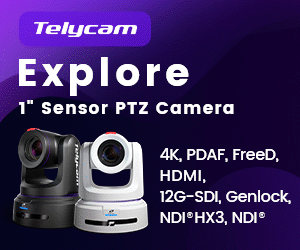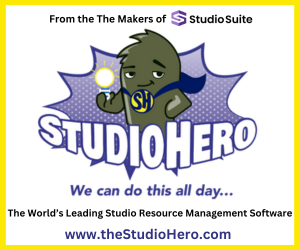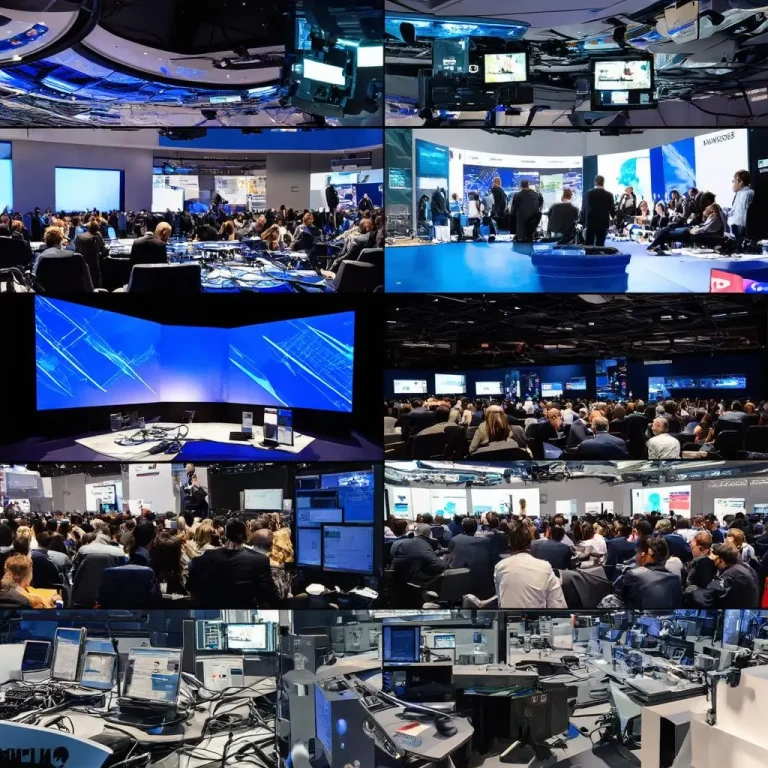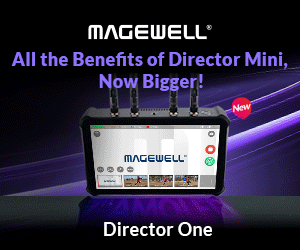
Can you tell us about your background, and how you started in the industry?
I finished my studies in 2016, and I started a sound technician course in operation and an audiovisual engineering course. These two highly complementary courses enriched each other. Engineering allows you to understand the infrastructures used during operation and operation allows you to have a better vision of the needs and constraints of the field during the technical design of a control room.
What was it about broadcast audio that attracted you and what keeps you interested and challenged?
I really enjoy designing and imagining solutions. Today, technology allows us to do almost anything, focusing on being as efficient as possible. I really love looking for solutions, explaining the problems to the clients, and working together to find a solution that will fit perfectly for the production and technicians. Sometimes it’s not always a race to use the latest technology, it’s very often about compromises. This very human side is the most interesting. Looking for the solution that will best suit a team when faced with a problem. Two teams facing the same problem will not have the same needs and so not the same solutions.
How has the industry’s attitude towards IP changed since we last spoke in 2021 and how much of a role did Covid play in accelerating it?
Covid and the lockdowns forced us to see things differently. The decrease in activity during this period allowed many people to take the time to build test platforms, test new technologies, and think about the advantages and disadvantages that this could bring. This gave a boost to technological development – ST-2110 and remote production were in vogue and benefited from it and due to the restrictions, some even had to implement remote production which required an IP infrastructure and not a proprietary protocol to exist, which brought a lot of new problems. Our IP infrastructure increasingly resembles a huge network requiring IT skills at the same level as chief equipment. We need a new position such as an IT Engineer with additional people to manage the IT system. I think our jobs will change drastically in the coming years – it has already started.
When working with BOB (Boîte à Outils Broadcast) in 2021, you were one the first people to recognise the remote potential of SMPTE 2110, utilising the Type R console to remotely produce live television during Covid. What are your thoughts when you look back at that project now?
I often talk about it! It was a blessing to have been able to test this remote production system in advance. It obviously has advantages, but also disadvantages. On the one hand, it was a chance to work from home, but I had very little social interaction with my colleagues. Remote production will also reduce travel. In some ways this is good, but you also have to realise that our work allows us to travel to unusual places and sometimes to places prohibited to the public. We are very lucky to visit these beautiful places. If I was asked tomorrow to cover an event like the Olympics while staying at the office, I don’t know if it would be as interesting as it is today from my point of view.
Sometimes, moving us away from the context can become counterproductive. Just look at sports commentators, for example, who increasingly commentate on matches remotely. There’s not the same intensity in the commentary as when the commentator is in the stadium. However, this can help reduce the cost of certain services in order to popularise and broadcast lesser-known events with smaller budgets. There are financial and organisational advantages. My engineering side likes the idea of having great flexibility and being able to create a huge production centre by centralising resources, which would allow easier access for better broadcasting of sports, for example. But my operating side can’t imagine working in an office far from the filming environment.
How do you think TV viewers’ audio expectations have changed over the last few years?
I think the main changes in television today are the decline of linear television and the arrival of more immersive programming for the viewer. For me, the first effect is immersion in sports. Today, a fan must choose between the atmosphere and experience in the stadium and a good view of the game depending on their seating in the stands. For many events, getting to the stadium isn’t always easy. This is where we can play a role, capturing sport in the most immersive way possible. Allowing certain matches or games to be broadcast in cinemas, for example to allow viewers to enjoy the experience as if they were in the stadium, but without having to travel and with a very precise view of the game. Some operas or plays are broadcast in cinemas, why not sports? It’s also entertainment!
With talk about the cloud delivering more efficiency, what are the implications on audio production? How are broadcasters looking at cloud as viable workflows and what are the benefits?
The cloud allows for pooling needs and being highly flexible in available resources. It also allows for centralising servers. Using servers and standardising protocols between machines is key. For me, this is linked to virtualisation. What is certain is that virtualisation requires the transition to AoIP to exist, as well as the widespread use of HTML interfaces. We are currently validating the transition to AoIP protocols; virtualisation is simply the next logical step. This simplifies exchanges between applications and the server. It simplifies configuration and network topology. Everything converges toward a single point, a data centre. The challenge will be orchestrating the use of these resources. Traditionally, we have one console, for example, per OB van and per control room. So everyone manages their own console, and the scope of action is limited to their own control room. Tomorrow, we can imagine a server that hosts multiple consoles. Who is responsible for the server? An intervention on the server impacts all consoles. It will be necessary to be vigilant about the distribution of responsibilities for each person or even create a position/”person in charge of” the server.
How long have you been using Calrec products and what are the benefits?
I started working on Calrec with Mediapro and BOB. For Téléfoot, it was an Artemis to have enough power to mix the multiplexes and the channel’s broadcasts continuously from 11 a.m. to midnight.
With BOB, it was a need for modularity that led us to move towards a Type R. The perfect example was during Covid when we had to adapt. At first, production was hesitant about remote production, and we only did interviews recorded remotely, so a fader tray was enough. Then, as we gradually resumed filming, we had to increase the surface area, and we only had to add faders to expand the surface area. On the last day, we had five fader trays.
I have since had the opportunity to work on the renewal of two OB vans for France Televisions with Calrec Impulse cores and Apollo consoles. The specification requirements included a ST2110 console capable of interfacing with all traditional protocols (MADI, AES3, Dante, AA Soundgrid, etc.). Since then, these two trucks have been able to shine at premium events such as the Tour de France, Paris 2024 Olympic Games, National day July 14, Six Nations Tournament, European Athletics Championships and more. Calrec allows you to mix different audio formats; these are highly modular audio mixers both in ergonomics and in the process they offer. From sport to entertainment, the mixer already fits to the demand!
With so much development going on, how important is it to maintain good relationships with technology suppliers like Calrec? What are the advantages of doing so?
Products are not only evolving, but they’re also tending to become servers, and I think that it’s essential to maintain contact with manufacturers more now than ever. Previously, a console had a fixed number of processing channels and buses linked to its design. Today, we’re working on a server with processing capacity that can be allocated according to the user’s needs. This allows for greater adaptability and encourages the user to tweak resources to meet their needs. Developments are increasingly software-based, and therefore much more scalable. However, evolving software requires significant cooperation between the user and the designer. A new version must fix known bugs from previous versions (without adding new ones) but also add new features reported by users.
The more of us that submit the same development request, the more legitimate it will be in the eyes of manufacturers. And the more a manufacturer listens to its users, the more it earns their trust. It is a relationship that must be constantly built and maintained.
What project have you most enjoyed working on and why?
I really like the challenge of the Eurovision Junior 2021 and Cannes Film Festival. But the best project was the Olympic Games, because ever since I was young, I have been passionate about sport and to have the opportunity to be in the Stade de France for the Athletics was unbelievable and such a crazy atmosphere! Our job is not only about technology, it’s sometimes to just work at an incredible place or event with fantastic colleagues.
Can you tell us more about the Cannes Film Festival project?
Yes, I was working on it again this year with Gregory Chevalier and Emmanuel Bellaches, just as last year we worked with the Flight control room at the FTV UM3 factory. I worked on the intercom side of the sound team. My role was to enable each technician to communicate, whether they were remote operators from Paris with the control room in Cannes or allowing journalists to duplex with Paris.
We had a little over:
30 x IP intercom panels
1 x remote intercom panel in Paris
15 x Freespeaks
8 x SIP connections
10 x ears
16 x 4W links with a trunked matrix with that of the festival TV van to ensure continuity across the entire site: steps of the Palais/TV studio) in boleros.
6 x coord with Satellite
3 x coordination feeds with AMP VISUAL TV
2 x translation booths
The challenge lay in the ability to chain together broadcast configuration changes several times a day. Over the 12 days of work there wasn’t any recurrence.
How do you see audio evolving in the next five years? How do we encourage new talent into the industry to help continue to drive it forward?
It is indeed a world full of change. AoIP was first, which brings flexibility in remote production, the network allows us to work in the cloud and so remotely. Soon AI will also come to disrupt our ways of working and our positions. However, these are very expensive and very new technologies. Nowadays, everyone is convinced of the benefits of moving to AoIP (not only 2110 but Dante/ Ravena and other protocols) but it’s a big change and a lucrative but expensive choice. Many are still hesitant to take the big leap, so we still have a few years to prepare for this change and ensure that our professions benefit from it and do not suffer from it. There is a future to create even more today than a few years ago.
What’s the one piece of advice you’d give to someone coming into the industry?
Go and have fun! There are no bad ideas or bad solutions, so try yours and as long as it works, you’re partly right.
If you had to choose a couple of words to sum up Calrec, what would they be and why?
Calrec has a large suite of sound products, with plenty of products to fit perfectly to your needs, and it is easy to switch between sound mixers with the same interface via Calrec Assist!
Calrec has a very valuable and effective human support team! You need a people/customer-first company!
- Calrec delivers future-focused production for Whisper at Wales’s first ever dedicated remote production hub - November 11, 2025
- EBU Selects the LiveU EcoSystem to Deliver IP-Based 24/7 Live News Network - November 4, 2025
- LiveU and Kinetiq Launch Cloud-Native Watermarking Integration for Live Video Distribution - October 29, 2025















